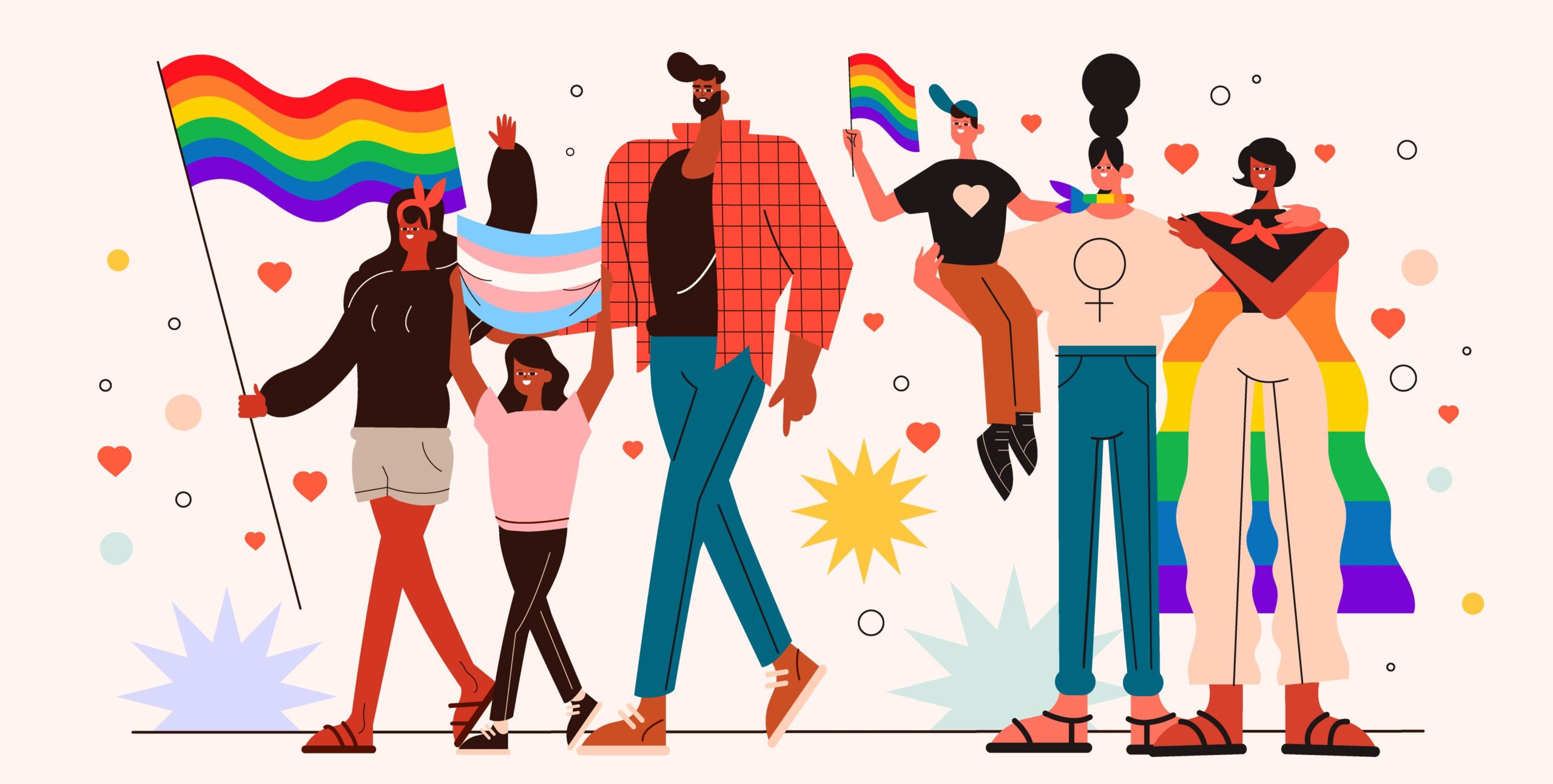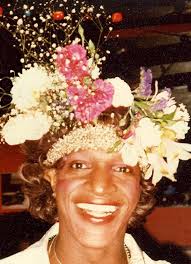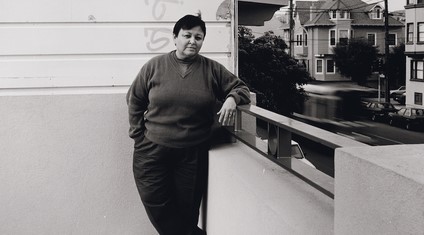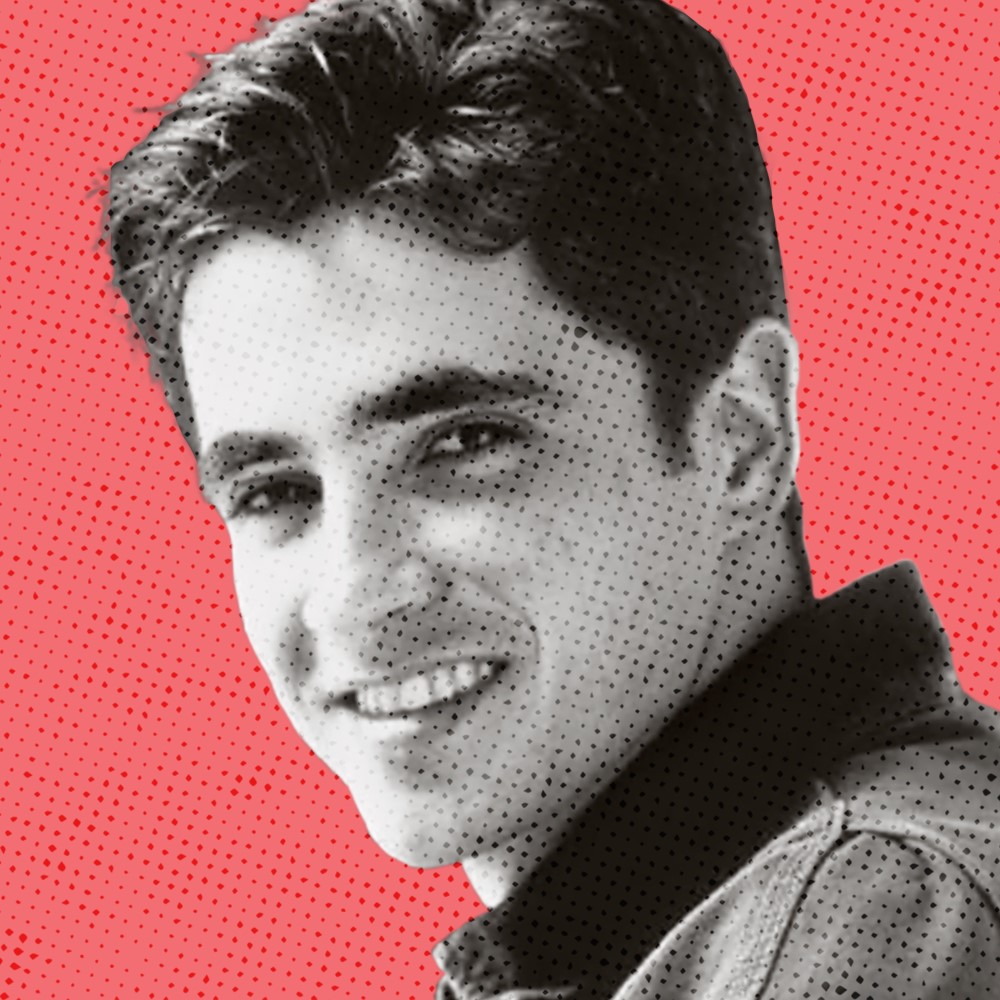
BIPOC 2SLGBTQIA+ people are often left behind when it comes to Pride, and so are our contributions to it. As a member of this community myself, I’ve experienced the struggles that come when more than one of your identities are not celebrated and centered, even by the community that’s supposed to love and accept you. That’s why I’ve compiled this list of three icons who are all BIPOC: Marsha P. Johnson, Barbara Cameron and Pedro Zamora. We deserve to be celebrated, and our contributions to Pride deserve to be remembered and respected all year around, not just for one month!
Marsha P. Johnson  Black gay rights activist, oftentimes miscredited with starting the stonewall riots, Johnson was a prominent figure in the 2SLGBTQIA+ community in NYC. Having left for New York after graduating high school in 1963 with only $15, she built a life for herself as a drag queen and sex worker, and became instrumental in the fight for gay rights. After the stonewall riots, Johnson joined the GLF (Gay Liberation Front), and would eventually go on to found STAR (Street Transvestite Action Revolutionaries), an organization that provided housing support to homeless 2SLGBTQIA+ youth and sex workers. Johnson was also H.I.V. positive and in the early years of the AIDS epidemic would often spend her time sitting with dying AIDS patients at the hospital, bringing them a source of comfort when no one else would. Johnson would also go on to commit herself to activism around HIV and AIDS, working with many different grassroots organizations. Johnson would also go on to do a lot of activism around gay-bashing, organizing many marches to protest the rise in rates of that crime. Unfortunately Johnson would soon become a victim of it, and was murdered. However Johnson will always be known as a pioneer of gay rights, and for her community and dedication to the 2SLGBTQIA+ community in NYC.
Black gay rights activist, oftentimes miscredited with starting the stonewall riots, Johnson was a prominent figure in the 2SLGBTQIA+ community in NYC. Having left for New York after graduating high school in 1963 with only $15, she built a life for herself as a drag queen and sex worker, and became instrumental in the fight for gay rights. After the stonewall riots, Johnson joined the GLF (Gay Liberation Front), and would eventually go on to found STAR (Street Transvestite Action Revolutionaries), an organization that provided housing support to homeless 2SLGBTQIA+ youth and sex workers. Johnson was also H.I.V. positive and in the early years of the AIDS epidemic would often spend her time sitting with dying AIDS patients at the hospital, bringing them a source of comfort when no one else would. Johnson would also go on to commit herself to activism around HIV and AIDS, working with many different grassroots organizations. Johnson would also go on to do a lot of activism around gay-bashing, organizing many marches to protest the rise in rates of that crime. Unfortunately Johnson would soon become a victim of it, and was murdered. However Johnson will always be known as a pioneer of gay rights, and for her community and dedication to the 2SLGBTQIA+ community in NYC.
Barbara Cameron Barbara Cameron was a Two-Spirit activist, lesbian, leader and organizer in San Francisco, who dedicated her life to the fields of 2SLGBTQIA+ rights, women’s rights and Native American rights. She was a Hunkpapa Lakota from the Standing Rock Sioux Tribe. In 1975, Cameron founded GAI (Gay American Indians) alongside Randy Burns, the first association for gay Native Americans. GAI created a mutual aid network for its members, and fought for Indigenous rights. When the AIDS pandemic hit, GAI would become crucial to supporting the 2SLGBTQIA+ Indigenous community by founding the Indian AIDS Project and the American Indian AIDS Institution. Cameron was also a prominent writer, having contributed to many anthologies such as ‘Our Right to Love: a Lesbian Resource Book’, ‘A Gathering of Spirit: A Collection of Writing and Art by North American Indian Women’, as well as many others. She was also involved with organizing the Lesbian Gay Freedom Day Parade and Celebration from 1980-1985. Although she died from natural causes at her home in 2002, she will forever be remembered as an important and crucial figure in both the 2SLGBTQIA+ and Indigenous communities.
Barbara Cameron was a Two-Spirit activist, lesbian, leader and organizer in San Francisco, who dedicated her life to the fields of 2SLGBTQIA+ rights, women’s rights and Native American rights. She was a Hunkpapa Lakota from the Standing Rock Sioux Tribe. In 1975, Cameron founded GAI (Gay American Indians) alongside Randy Burns, the first association for gay Native Americans. GAI created a mutual aid network for its members, and fought for Indigenous rights. When the AIDS pandemic hit, GAI would become crucial to supporting the 2SLGBTQIA+ Indigenous community by founding the Indian AIDS Project and the American Indian AIDS Institution. Cameron was also a prominent writer, having contributed to many anthologies such as ‘Our Right to Love: a Lesbian Resource Book’, ‘A Gathering of Spirit: A Collection of Writing and Art by North American Indian Women’, as well as many others. She was also involved with organizing the Lesbian Gay Freedom Day Parade and Celebration from 1980-1985. Although she died from natural causes at her home in 2002, she will forever be remembered as an important and crucial figure in both the 2SLGBTQIA+ and Indigenous communities.
Pedro Zamora A Cuban-American HIV/AIDS activist and reality TV Star, Zamora, will forever be remembered for his bravery and passion for educating society about HIV/AIDS. Having been diagnosed with HIV when he was 17, Zamora went on to become a full-time HIV/AIDS educator, speaking to American audiences hundreds of times about HIV, AIDS, and the issues the 2SLGBTQIA+ and HIV positive communities faced. In 1993, Zamora would go on to join the cast of The Real World, allowing him to reach millions of households across the USA. This was during the peak of the “AIDS crisis” in the US, making Zamora’s honesty and willingness to educate all the more courageous. Although Zamora would unfortunately succumb soon after filming ended in 1994, his activism and candor were crucial to de-stigmatizing HIV and AIDS in the minds of many.
A Cuban-American HIV/AIDS activist and reality TV Star, Zamora, will forever be remembered for his bravery and passion for educating society about HIV/AIDS. Having been diagnosed with HIV when he was 17, Zamora went on to become a full-time HIV/AIDS educator, speaking to American audiences hundreds of times about HIV, AIDS, and the issues the 2SLGBTQIA+ and HIV positive communities faced. In 1993, Zamora would go on to join the cast of The Real World, allowing him to reach millions of households across the USA. This was during the peak of the “AIDS crisis” in the US, making Zamora’s honesty and willingness to educate all the more courageous. Although Zamora would unfortunately succumb soon after filming ended in 1994, his activism and candor were crucial to de-stigmatizing HIV and AIDS in the minds of many.
Written by Alice, a Trip! Peer